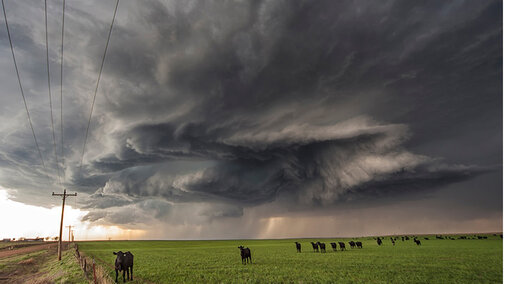Why Are We in Ag?
By Brad Schick
This Independence Day makes me reflect on agriculture and why we do it. There is no arguing that we currently make good money in agriculture, but it goes beyond that. We find comfort and joy in the first breath of a newborn calf, the tender shoot of a resilient corn plant, and the smell of freshly cut alfalfa.
Some say it takes us back to simpler times. Some say seeing the creation of life every year is our connection to the creation of life thousands of years ago. In agriculture, we are stewards and caretakers of the resources we have been blessed with for just a short time while on this earth. Even so, we want to have some say and some influence on our lives. We want to control our outcomes and not have someone mandating or restricting the decisions that affect our cattle, crops and family even while understanding that we really have little control over our lives.
When the British said we had no say over taxation, among other things, we took that power back and created the greatest country on earth. Our forefathers had faith that we would be prosperous by doing what was right and trusted their sacrifice was worthwhile. It wasn’t easy and maintaining the freedoms we have still isn’t easy.
This Independence Day, I ask you to reflect on why you are in ag. Is it the challenge? Is it the independence? Is it the income? Is it the joy of seeing the creation of life every year? Regardless, I know that I’m a proud American. In agriculture, we shouldn’t demand to be thanked or deserve to be thanked, but we can be proud and humble of what we do every day.
Forages Following Wheat
Wheat harvest is right around the corner and that leads us to be thinking about some forage opportunities after harvest is complete. There is plenty of growing season left this year and there are several forage possibilities.
If the cropland is not irrigated, receiving some rains after wheat harvest is, of course, going to be necessary to grow that forage crop.
For example, with good moisture an early maturing corn is one possibility for silage if you plant it thick. A better dryland choice might be a high grain-producing forage sorghum if chinch bugs and other insects are not a problem. Sunflowers can be a surprisingly good choice for a short-season silage. They survive light frost and yield well under many conditions.
If hay is preferred, plant sorghum-sudan hybrids, teff, or pearl or foxtail millet. A hay crop exceeding two to three tons per acre can be grown easily if planted soon after wheat harvest. Another hay or silage alternative is solid-seeded soybeans. A couple tons of good forage can be grown from taller, full season varieties planted after wheat.
Oats planted in late July to early August is another option. Yields over two tons are common when moisture is good, fertility is high and your hard freeze comes a little late.
Definitely consider turnips, as well as oats, for fall pasture planted into wheat stubble in late July or early August. With a few timely rains in August and September, both oats and turnips produce much high-quality feed in a short time and are relatively inexpensive to plant.
Don't automatically let your wheat ground sit idle the rest of the year, especially if you could use more forage.
Grazing with the Weather
Precipitation and temperature play major roles in pasture productivity and knowing how to adjust grazing to match current conditions is key. Are you shifting your management to meet recent weather?
Stocking and grazing management are not static things. When production is limited — especially during a drought period — stretching forage resources is a high priority. By this point in the year, our pastures have produced the vast majority of forage that we will get. Using temporary electric fence to cross fence can increase utilization, slowing down a grazing rotation and stretching forage considerably.
This is especially true when plants become dormant due to lack of precipitation or heat. Typically, utilization seeks to balance animal demand and plant health, but taking more of a dormant plant without damaging the crown has little impact on overall plant health.
On the flip side, grass that is getting tall and lanky ahead of a grazing rotation could benefit from flash grazing. Moving animals on and off quickly can help keep plants from getting over-mature. Keep up this fast pace while growth is rapid. Once growth slows, then the rotation can slow down as well.
Speeding up grazing when things are wet and slowing down during dry times is a great strategy to use as we adjust to the weather Mother Nature throws our way. Doing so can help you find the perfect balance for your pasture and animal health.

